
Greater Queens Podiatry, PLLC
 (718) 229-0222
(718) 229-0222
 (718) 229-0222
(718) 229-0222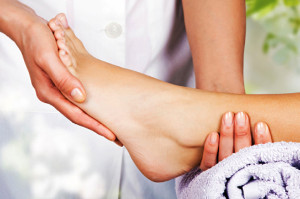 Known as a chronic autoimmune disease, lupus and its symptoms are similar to that of arthritis, affecting the tissues in the joints and leading to various problems in the feet including bunions, claw toes, and hammertoes. Lupus can also lead to tendonitis, loss of feeling or neuropathy, muscle inflammation, corns and calluses, swollen feet or oedema, and more. It is especially important to watch lupus symptoms, as infections such as gangrene can develop in a healthy person. Visit your podiatrist to assess your condition, as well as invest in proper footwear with insoles.
Known as a chronic autoimmune disease, lupus and its symptoms are similar to that of arthritis, affecting the tissues in the joints and leading to various problems in the feet including bunions, claw toes, and hammertoes. Lupus can also lead to tendonitis, loss of feeling or neuropathy, muscle inflammation, corns and calluses, swollen feet or oedema, and more. It is especially important to watch lupus symptoms, as infections such as gangrene can develop in a healthy person. Visit your podiatrist to assess your condition, as well as invest in proper footwear with insoles.
When dealing with systemic disease of the feet, it is extremely important to check the affected areas routinely so that any additional problems are caught quickly. If you have any concerns about your feet and ankles contact our podiatrists from Greater Queens Podiatry, PLLC. Our doctors will assist you with all of your podiatric needs.
Systemic Diseases of the Feet
Systemic diseases affect the whole body, and symptoms usually are displayed in the feet. This condition can make a patient’s ability to walk unbearable. Systemic diseases include gout, diabetes mellitus, neurological disorders, and arthritis.
Gout – is caused by an excess of uric acid in the body. Common symptoms include pain, inflammation, and redness at the metatarsal/phalangeal joint of the base big toe. Gout can be treated by NSAIDs to relieve pain and inflammation, and other drugs that lower the acid levels in the body.
Diabetes mellitus – is an increase in the level of blood sugar that the body cannot counteract with its own insulin. Failure to produce enough insulin is a factor in Diabetes.
Diabetes of the Feet
Diabetic Neuropathy – may lead to damaged nerves and affect the feet through numbness and loss of sensation.
Peripheral Vascular Disease – can restrict the blood flow to the feet, and often times lead to amputation of the feet.
If you have any questions please feel free to contact our office located in Bayside, NY. We offer the newest diagnostic and treatment technologies for all your foot and ankle needs.
Read more about Systemic Diseases of the Foot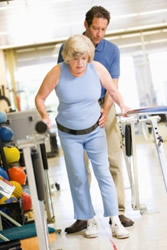 When we age, we gradually lose muscle and gain fat, which typically contributes to declines in strength and issues with gait and balance. A recent study published in the Journal of the American Geriatric Study examined the effects of various of forms of exercise in lowering fall risk. Findings concluded that while programs including brisk walking had no effect on falls, those that included resistance training and challenging balance exercises were extremely effective in preventing falls. Strength and resistance training, even for the elderly, can greatly improve gait and therefore decrease fall risk. Simple exercises such as balancing on one leg while lightly using a table or chair for support can help gauge balance and strength.
When we age, we gradually lose muscle and gain fat, which typically contributes to declines in strength and issues with gait and balance. A recent study published in the Journal of the American Geriatric Study examined the effects of various of forms of exercise in lowering fall risk. Findings concluded that while programs including brisk walking had no effect on falls, those that included resistance training and challenging balance exercises were extremely effective in preventing falls. Strength and resistance training, even for the elderly, can greatly improve gait and therefore decrease fall risk. Simple exercises such as balancing on one leg while lightly using a table or chair for support can help gauge balance and strength.
Proper foot care is something many older adults forget to consider. If you have any concerns about your feet and ankles, contact one of our podiatrists from Greater Queens Podiatry. Our doctors can provide the care you need to keep you pain-free and on your feet.
The Elderly and their Feet
As we age we start to notice many changes in our body, but the elder population may not notice them right away. Medical conditions may prevent the elderly to take notice of their foot health right away. Poor vision is a lead contributor to not taking action for the elderly.
Common Conditions
Neuropathy – can reduce feeling in the feet, and can hide many life threating medical conditions.
Reduced flexibility – prevents the ability of proper toenail trimming, and foot cleaning. If left untreated, it may lead to further medical issues.
Foot sores – amongst the older population can be serious before they are discovered. Some of the problematic conditions they may face are:
Gouging toenails affecting nearby toe
Shoes that don’t fit properly
Pressure sores
Loss of circulation in legs & feet
Edema & swelling of feet and ankles
Susceptible Infections
Diabetes and poor circulation can cause general loss of sensitivity over the years, turning a simple cut into a serious issue.
If you have any questions please feel free to contact our office located in Bayside, New York. We offer the newest diagnostic and treatment technologies for all your foot and ankle needs.
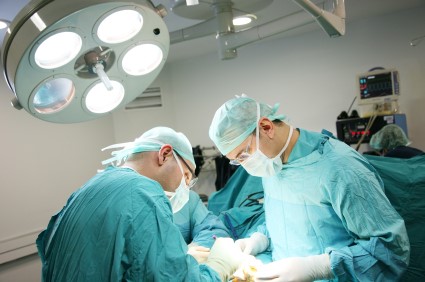 In a recent study focusing on the effects of shoes on women’s feet, 88% of the women included were wearing shoes that were too small for their feet. 356 women were included in the study. Most of the women had not re-measured their feet in over ten years, and over 50% stated that they experienced daily foot pain from their shoes. Wearing shoes that are too tight can make way for the development of foot conditions such as bunions, hammertoes, corns, and calluses, and can even result in surgery for the treatment or removal of such conditions. Surgery is often seen as the final option for the treatment of many of these conditions; to lessen the possibility of surgery and the development of these conditions in general, always wear shoes of the proper size.
In a recent study focusing on the effects of shoes on women’s feet, 88% of the women included were wearing shoes that were too small for their feet. 356 women were included in the study. Most of the women had not re-measured their feet in over ten years, and over 50% stated that they experienced daily foot pain from their shoes. Wearing shoes that are too tight can make way for the development of foot conditions such as bunions, hammertoes, corns, and calluses, and can even result in surgery for the treatment or removal of such conditions. Surgery is often seen as the final option for the treatment of many of these conditions; to lessen the possibility of surgery and the development of these conditions in general, always wear shoes of the proper size.
Foot surgery is sometimes necessary to fix a foot ailment. To learn more, contact Dr. Nicholas Megdanis from Greater Queens Podiatry PLLC. Our doctor can provide the care you need to keep you pain-free and on your feet.
When Is Surgery Necessary?
Foot and ankle surgery is generally reserved for cases in which less invasive, conservative procedures have failed to help with the problem. Some of the cases in which surgery may be necessary are:
● Removing foot deformities like bone spurs and bunions
● Severe arthritis that has caused bone issues
● Cosmetic reconstruction
What Types of Surgery Are There?
The type of surgery you receive will depend on the nature of the problem you have. Some of the possible surgeries include:
● Bunionectomy for painful bunions
● Surgical fusion for realignment of bones
● Neuropathy decompression surgery to treat nerve damage
Benefits of Surgery
Although surgery is usually a last resort, it can provide more complete pain relief compared to non-surgical methods and may allow you to finally resume full activity.
Surgical techniques have also become increasingly sophisticated. Techniques like endoscopic surgery allow for smaller incisions and faster recovery times.
If you have any questions please feel free to contact our office located in Bayside, New York. We offer the newest diagnostic and treatment technologies for all your foot and ankle needs.
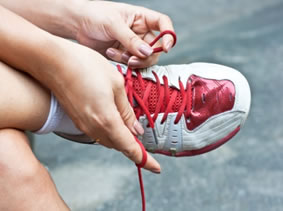 According to the American College of Foot and Ankle Surgeons (ACFAS), it’s important to keep your feet safe during the winter months with proper footwear. Proper winter footwear should provide traction against the snow and icy surfaces. The footwear should also keep your feet warm, insulated, and be water-resistant. Proper protection can help ward off against poor blood circulation caused by the cold. Wearing breathable, moisture-resistant socks can also offer greater protection, as keeping the feet dry is just as important as keeping them warm.
According to the American College of Foot and Ankle Surgeons (ACFAS), it’s important to keep your feet safe during the winter months with proper footwear. Proper winter footwear should provide traction against the snow and icy surfaces. The footwear should also keep your feet warm, insulated, and be water-resistant. Proper protection can help ward off against poor blood circulation caused by the cold. Wearing breathable, moisture-resistant socks can also offer greater protection, as keeping the feet dry is just as important as keeping them warm.
Finding a properly-fitting shoe is important in reducing injuries and preventing foot problems. For more information about treatment, contact one of our podiatrists from Greater Queens Podiatry PLLC. Our doctors will treat your foot and ankle needs.
Proper Shoe Fitting
A common concern when it comes to foot health, having properly fitted shoes can help prevent injuries to the foot. Out feet affect our posture and gait, which in turn affects the biomechanics and overall bodily structure. With 33 joints, 26 bones, and over 100 ligaments, the potential for serious injury is much greater than one realizes. Although the feet cease growth in adulthood, they still change shape as they mature. Here are some factors to consider when it comes to investing in proper fitting shoes:
● Be sure the shoes fit correctly right away
● Ensure the ball of your foot fits comfortably in the widest portion of the shoes
● Even though they may look fashionable, improper fitting shoes can either create adverse conditions or exacerbate existing ones you may already have
● Walk along a carpeted surface to ensure the shoes comfortably fit during normal activity
Keeping in mind how shoes fit the biomechanics of your body, properly-fitting shoes are vitally important. Fortunately, it is not difficult to acquire footwear that fits correctly. Be sure to wear shoes that support the overall structure of your body. Do your feet a favor and invest in several pairs of well-fitted shoes today.
If you have any questions please feel free to contact our office located in Bayside, New York. We offer the newest diagnostic and treatment technologies for all your foot and ankle needs.
 “If you want to know the state of your health, try looking down.” Poor circulation in a person’s feet can be caused by a variety of things, and it is vitally important not to ignore any hint that this may be happening to you. Symptoms to look out for include cold feet, numbness, pain, or swelling. Diabetes can lead to poor circulation in the extremities and if left untreated, can wreak havoc on your feet. But there are many other reasons for lack of blood flow, including neurological issues, Peripheral Artery Disease (PAD), and smoking, among others. Causes of these symptoms can become serious so it is imperative get to a podiatrist immediately to find out what is going on.
“If you want to know the state of your health, try looking down.” Poor circulation in a person’s feet can be caused by a variety of things, and it is vitally important not to ignore any hint that this may be happening to you. Symptoms to look out for include cold feet, numbness, pain, or swelling. Diabetes can lead to poor circulation in the extremities and if left untreated, can wreak havoc on your feet. But there are many other reasons for lack of blood flow, including neurological issues, Peripheral Artery Disease (PAD), and smoking, among others. Causes of these symptoms can become serious so it is imperative get to a podiatrist immediately to find out what is going on.
Poor circulation is a serious condition and needs immediate medical attention. If you have any concerns with poor circulation in your feet contact one of our podiatrists from Greater Queens Podiatry. Our doctors can provide the care you need to keep you pain-free and on your feet.
Poor Circulation in the Feet
Poor blood circulation in the feet and legs is can be caused by peripheral artery disease (PAD), which is the result of a buildup of plaque in the arteries.
Plaque buildup or atherosclerosis results from excess calcium and cholesterol in the bloodstream. This can restrict the amount of blood which can flow through the arteries. Poor blood circulation in the feet and legs are sometimes caused by inflammation in the blood vessels, known as vasculitis.
Causes
Lack of oxygen and oxygen from poor blood circulation restricts muscle growth and development.
It can also cause:
· muscle pain, stiffness, or weakness
· numbness or cramping in the legs
· skin discoloration
· slower nail & hair growth
· erectile dysfunction
Those who have diabetes or smoke are at greatest risk for poor circulation, as are those who are over 50. If you have poor circulation in the feet and legs it may be caused by PAD, and is important to make changes to your lifestyle in order to reduce risk of getting a heart attack or stroke. Exercise and maintaining a healthy lifestyle will dramatically improve conditions.
As always see a doctor as they will help try and fit a regime that suits you. A doctor will also prescribe you medication which will help for PAD.
If you have any questions please feel free to contact our office located in Bayside, New York. We offer the newest diagnostic and treatment technologies for all your foot and ankle needs.
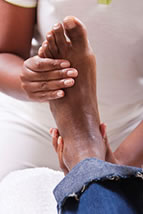 Ingrown toenails are a common foot problem and occur when the toenail begins growing into the skin on its sides. This, consequently, can lead to infections, swelling and irritation. You can prevent ingrown toenails by cutting your toenails straight across from end to end. Avoid improperly-fitting shoes, as they can squeeze your toes, potentially impacting how your toenails grow. Contact sports such as soccer that require an object to constantly impact the feet can also lead to an increased chance of ingrown toenails. If you think you may have an ingrown toenail, seek the advice of your podiatrist. While at home, soak your toenail in warm water with salt and apply antibiotic ointment afterwards. Avoid any tight bandages or socks.
Ingrown toenails are a common foot problem and occur when the toenail begins growing into the skin on its sides. This, consequently, can lead to infections, swelling and irritation. You can prevent ingrown toenails by cutting your toenails straight across from end to end. Avoid improperly-fitting shoes, as they can squeeze your toes, potentially impacting how your toenails grow. Contact sports such as soccer that require an object to constantly impact the feet can also lead to an increased chance of ingrown toenails. If you think you may have an ingrown toenail, seek the advice of your podiatrist. While at home, soak your toenail in warm water with salt and apply antibiotic ointment afterwards. Avoid any tight bandages or socks.
Ingrown toenails can become painful if they are not treated properly. For more information about ingrown toenails, contact one of our podiatrists from Greater Queens Podiatry. Our doctors can provide the care you need to keep you pain-free and on your feet.
Ingrown Toenails
Ingrown toenails occur when a toenail grows sideways into the bed of the nail, causing pain, swelling, and possibly infection.
Causes
Bacterial infections
Improper nail cutting such as cutting it too short or not straight across
Trauma to the toe, such as stubbing, which causes the nail to grow back irregularly
Ill-fitting shoes that bunch the toes too close together
Genetic predisposition
Prevention
Because ingrown toenails are not something found outside of shoe-wearing cultures, going barefoot as often as possible will decrease the likeliness of developing ingrown toenails. Wearing proper fitting shoes and using proper cutting techniques will also help decrease your risk of developing ingrown toenails.
Treatment
Ingrown toenails are a very treatable foot condition. In minor cases, soaking the affected area in salt or antibacterial soaps will not only help with the ingrown nail itself, but also help prevent any infections from occurring. In more severe cases, surgery is an option. In either case, speaking to your podiatrist about this condition will help you get a better understanding of specific treatment options that are right for you.
If you have any questions please feel free to contact our office located in Bayside, New York. We offer the newest diagnostic and treatment technologies for all your foot and ankle needs.
 If you have diabetes, you may know that proper management of your feet is vital toward your overall health. Diabetic feet are especially prone to infection and foot ulcers. Take care of your diabetic feet with the following tips. Make sure to properly wash and dry your feet, moisturizing any dry areas. Manage your toenails by cutting them appropriately. Avoid taking hot baths and wear only breathable socks and footwear that do not squeeze your feet and can potentially impact your circulation. Avoid going barefoot, especially in public places. See your doctor immediately if you think you may encounter any foot complications such as sensitivity in the feet, an infection or foot sore.
If you have diabetes, you may know that proper management of your feet is vital toward your overall health. Diabetic feet are especially prone to infection and foot ulcers. Take care of your diabetic feet with the following tips. Make sure to properly wash and dry your feet, moisturizing any dry areas. Manage your toenails by cutting them appropriately. Avoid taking hot baths and wear only breathable socks and footwear that do not squeeze your feet and can potentially impact your circulation. Avoid going barefoot, especially in public places. See your doctor immediately if you think you may encounter any foot complications such as sensitivity in the feet, an infection or foot sore.
Diabetic foot care is important in preventing foot ailments such as ulcers. If you are suffering from diabetes or have any other concerns about your feet, contact one of our podiatrists from Greater Queens Podiatry. Our doctors can provide the care you need to keep you pain-free and on your feet.
Diabetic Foot Care
Diabetes affects millions of people every year. Diabetes can damage blood vessels in many parts of the body, including the feet. Because of this, taking care of your feet is essential if you have diabetes, and having a podiatrist help monitor your foot health is highly recommended.
The Importance of Caring for Your Feet
● Routinely inspect your feet for bruises or sores.
● Wear socks that fit your feet comfortably.
● Wear comfortable shoes that provide adequate support.
Patients with diabetes should have their doctor monitor their blood levels because blood sugar levels play such a huge role in diabetic care. Monitoring these levels on a regular basis is highly advised.
It is always best to inform your healthcare professional of any concerns you may have regarding your feet, especially for diabetic patients. Early treatment and routine foot examinations are keys to maintaining proper health, especially because severe complications can arise if proper treatment is not applied.
If you have any questions please feel free to contact our office located in Bayside, New York. We offer the newest diagnostic and treatment technologies for all your foot and ankle needs.
 The number of cases of hand, foot and mouth disease (HFMD) are on the rise, especially among children at schools, as the disease is highly contagious. School administrators at the Ministry of Health advise that children who have the disease stay at home “for at least seven days.” Additionally, they advise that any immediate objects in the school environment should be cleaned frequently to help reduce the spread of the virus. Good hygiene as well as caution during close contact should be encouraged among your children to help toward prevention of HFMD.
The number of cases of hand, foot and mouth disease (HFMD) are on the rise, especially among children at schools, as the disease is highly contagious. School administrators at the Ministry of Health advise that children who have the disease stay at home “for at least seven days.” Additionally, they advise that any immediate objects in the school environment should be cleaned frequently to help reduce the spread of the virus. Good hygiene as well as caution during close contact should be encouraged among your children to help toward prevention of HFMD.
Making sure that your children maintain foot health is very important as they grow. If you have any questions, contact Dr. Nicholas Megdanis from Greater Queens Podiatry PLLC. Our doctor can provide the care you need to keep you pain-free and on your feet.
Keeping Children's Feet Healthy
Having healthy feet in childhood can help prevent medical problems later in life, namely in the back and legs. As children grow, their feet require different types of care from birth to school-age.
Although babies do not walk yet, it is still very important to take care of their feet.
· Avoid putting tight shoes or socks on his or her feet
· Allow the baby to stretch and kick his or her feet to feel comfortable
As a toddler, kids are now on the move and begin to develop differently. At this age, toddlers are getting a feel for walking, so don’t be alarmed if your toddler is unsteady or ‘walks funny’.
As your child gets older, it is important to teach them how to take care of their feet
Show them proper hygiene to prevent infections such as fungus
Be watchful of any pain or injury
Have all injuries checked by a doctor as soon as possible
Comfortable, protective shoes should always be worn, especially at play
If you have any questions please feel free to contact our office located in Bayside, New York. We offer the newest diagnostic and treatment technologies for all your foot and ankle needs.
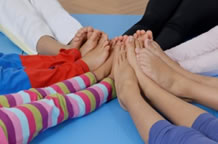 With 26 bones in each foot, our feet play a large part in our everyday activities. Therefore, it’s important to take care of our feet to prevent conditions such as arthritis or other ailments. The Huffington Post recommends some particular tips in ensuring proper foot care. These include wearing properly-fitting shoes that do not squeeze our feet and that accommodate your specific foot structure. If you have balance problems, going barefoot may help with stimulation of your foot structure. Walking on different surfaces and take note of your own gait.
With 26 bones in each foot, our feet play a large part in our everyday activities. Therefore, it’s important to take care of our feet to prevent conditions such as arthritis or other ailments. The Huffington Post recommends some particular tips in ensuring proper foot care. These include wearing properly-fitting shoes that do not squeeze our feet and that accommodate your specific foot structure. If you have balance problems, going barefoot may help with stimulation of your foot structure. Walking on different surfaces and take note of your own gait.
Every day foot care is very important to prevent infection and other foot ailments. If you need your feet checked contact Dr. Nicholas Megdanis from Greater Queens Podiatry PLLC. Our doctor can provide the care you need to keep you pain-free and on your feet.
Every Day Foot Care
Often, people take care of their bodies, face and hair more so than they do for their feet. But the feet are a very important aspect of our bodies, and one that we should pay more attention to. After all, without our feet, we would not be able to perform most daily tasks. It is best to check your feet regularly to make sure there are no new bruises or cuts that you may not have noticed before, for example.
For dry feet, moisturizer can easily be a remedy and can be applied as often as necessary to the affected areas. Wearing shoes that fit well can also help you maintain good foot health, as well as making it easier to walk and do daily activities without the stress or pain of ill-fitting shoes, high heels, or even flip flops.
Also, wearing clean socks with closed shoes is important to ensure that sweat and bacteria do not accumulate within the shoe. Clean socks help to prevent athlete’s foot, fungi problems, bad odors, and can absorb sweat.
If you have any questions please feel free to contact our office located in Bayside, New York. We offer the newest diagnostic and treatment technologies for all your foot and ankle needs.
 If leg or foot misalignment exists, it may interfere with spinal function. Feet are described as “the foundation of the body.” At birth, most people tend to have perfect feet. By age 20, 80 percent of those with “perfect feet” have developed some type of foot problem, and by the age of 40, nearly everyone has some sort of foot condition. The use of external supports such as heel lifts may significantly reduce biomechanical forces on the lumbar spine. The use of these lifts has been found to help ease structural strains on the body. Be sure to see your podiatrist if you suspect your feet are misaligned.
If leg or foot misalignment exists, it may interfere with spinal function. Feet are described as “the foundation of the body.” At birth, most people tend to have perfect feet. By age 20, 80 percent of those with “perfect feet” have developed some type of foot problem, and by the age of 40, nearly everyone has some sort of foot condition. The use of external supports such as heel lifts may significantly reduce biomechanical forces on the lumbar spine. The use of these lifts has been found to help ease structural strains on the body. Be sure to see your podiatrist if you suspect your feet are misaligned.
If you have any concerns about your feet, contact one of our podiatrists from Greater Queens Podiatry. Our doctors can provide the care you need to keep you pain-free and on your feet.
Biomechanics in Podiatry
Podiatric biomechanics is a particular sector of specialty podiatry with licensed practitioners who are trained to diagnose and treat conditions affecting the foot, ankle and lower leg. Biomechanics deals with the forces that act against the body, causing an interference with the biological structures. It focuses on the movement of the ankle, the foot and the forces that interact with them.
A History of Biomechanics
- Biomechanics dates back to the BC era in Egypt where evidence of professional foot care has been recorded.
- In 1974 biomechanics gained a higher profile from the studies of Merton Root, who claimed that by changing or controlling the forces between the ankle and the foot, corrections or conditions could be implemented to gain strength and coordination to the area.
Modern technological improvements are based on past theories and therapeutic processes that provide a better understanding of podiatric concepts for biomechanics. Computers can provide accurate information about the forces and patterns of the feet and lower legs.
Understanding biomechanics of the feet can help improve and eliminate pain, stopping further stress to the foot.
If you have any questions please feel free to contact our office located in Bayside, New York. We offer the newest diagnostic and treatment technologies for all your foot and ankle needs.
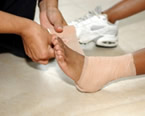 The sprained right ankle suffered by Boston Celtics player Marcus Smart last month kept him sidelined for several games. Smart has sprained this ankle previously, though this most recent occurrence is not as severe as past cases. Many attribute the less serious sprain to the fact that Smart has consecutively taped up his ankle for all of his games, something he has done without fail since suffering ankle sprains during his rookie season.
The sprained right ankle suffered by Boston Celtics player Marcus Smart last month kept him sidelined for several games. Smart has sprained this ankle previously, though this most recent occurrence is not as severe as past cases. Many attribute the less serious sprain to the fact that Smart has consecutively taped up his ankle for all of his games, something he has done without fail since suffering ankle sprains during his rookie season.
Ankle sprains are common, but need immediate attention. If you need your feet checked, contact Dr. Nicholas Megdanis from Greater Queens Podiatry PLLC. Our doctor can provide the care you need to keep you pain-free and on your feet.
How Does an Ankle Sprain Occur?
Ankle sprains take place when the ligaments in your ankle are torn or stretched beyond their limits. There are multiple ways that the ankle can become injured, including twisting or rolling over onto your ankle, putting undue stress on it, or causing trauma to the ankle itself.
What are the Symptoms?
● Mild to moderate bruising
● Limited mobility
● Swelling
● Discoloration of the skin (depending on severity)
Preventing a Sprain
● Wearing appropriate shoes for the occasion
● Stretching before exercises and sports
● Knowing your limits can aid in prevention
Treatment of a Sprain
Treatment of a sprain depends on the severity. Many times, people are told to rest and remain off their feet completely, while others are given an air cast. If the sprain is very severe, surgery may be required.
If you have suffered an ankle sprain previously, you may want to consider additional support such as a brace and regular exercises to strengthen the ankle.
If you have any questions, please feel free to contact our office located in Bayside, New York. We offer the newest diagnostic tools and technologies to treat your foot and ankle needs.
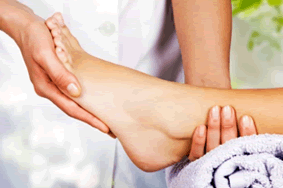 Ricky Foley, defensive for the Argos, has been suffering from an injury known as Morton’s neuroma, a condition of the toes that has been ailing him during this season. Morton’s neuroma is known as a painful condition that afflicts the area between the third and fourth toes and the ball of the foot. Foley’s condition exists between the second and third toes. The symptoms of Morton’s neuroma include sharp pain in the ball of the foot and in the toes. Proper shoe wear is vital to ensuring that the condition does not progress. Surgery may have to be one of Foley’s options.
Ricky Foley, defensive for the Argos, has been suffering from an injury known as Morton’s neuroma, a condition of the toes that has been ailing him during this season. Morton’s neuroma is known as a painful condition that afflicts the area between the third and fourth toes and the ball of the foot. Foley’s condition exists between the second and third toes. The symptoms of Morton’s neuroma include sharp pain in the ball of the foot and in the toes. Proper shoe wear is vital to ensuring that the condition does not progress. Surgery may have to be one of Foley’s options.
Morton’s Neuroma is a very uncomfortable condition to live with. If you think you have Morton’s neuroma contact Dr. Nicholas Megdanis from Greater Queens Podiatry PLLC. Our doctor can provide the care you need to keep you pain-free and on your feet.
Morton’s Neuroma
Morton's neuroma is a painful foot condition that commonly affects the areas between the second and third or third and fourth toe, although other areas of the foot are also susceptible. Morton’s neuroma is caused by an inflamed nerve in the foot that is being squeezed and aggravated by surrounding bones.
What Increases the Chances of having Morton’s Neuroma?
· -Ill-fitting high heels or shoes that add pressure to the toe or foot
· -Jogging, running or any sport that involves constant impact to the foot
· -Flat feet, bunions, and any other foot deformities
Morton’s neuroma is a very treatable condition. Orthotics and shoe inserts can often be used to alleviate the pain on the forefront of the feet. In more severe cases, corticosteroids can also be prescribed. In order to figure out the best treatment for your neuroma, it’s recommended to seek the care of a podiatrist who can diagnose your condition and provide different treatment options.
If you have any questions, please feel free to contact our office located in Bayside, New York. We offer the newest diagnostic tools and technologies to treat your foot and ankle needs.
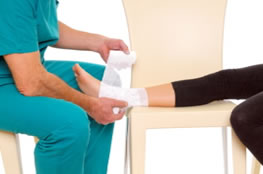 Ben Simmons of the Philadelphia 76ers underwent successful surgery in New York in late September to repair an acute Jones fracture found in the fifth metatarsal of his right foot. At the time, there was no estimated timetable for when Simmons would return. Simmons sustained the injury during the last training camp scrimmage at Stockton University. He rolled his ankle and X-rays and an MRI revealed that Simmons suffered a fracture.
Ben Simmons of the Philadelphia 76ers underwent successful surgery in New York in late September to repair an acute Jones fracture found in the fifth metatarsal of his right foot. At the time, there was no estimated timetable for when Simmons would return. Simmons sustained the injury during the last training camp scrimmage at Stockton University. He rolled his ankle and X-rays and an MRI revealed that Simmons suffered a fracture.
A broken foot requires immediate medical attention and treatment. If you need your feet checked, contact Dr. Nicholas Megdanis from Greater Queens Podiatry PLLC. Our doctor can provide the care you need to keep your pain free and on your feet.
Broken Foot Causes, Symptoms, and Treatment
A broken foot is caused by one of the bones in the foot typically breaking when bended, crushed, or stretched beyond its natural capabilities. Usually the location of the fracture indicates how the break occurred, whether it was through an object, fall, or any other type of injury.
Common Symptoms of Broken Feet:
Bruising
Pain
Redness
Swelling
Blue (foot)
Numbness
Cold
Misshapen
Cuts
Deformities
Those that suspect they have a broken foot shoot seek urgent medical attention where a medical professional could diagnose the severity.
Treatment for broken bones varies depending on the cause, severity and location. Some will require the use of splints, casts or crutches while others could even involve surgery to repair the broken bones. Personal care includes the use of ice and keeping the foot stabilized and elevated.
If you have any questions please feel free to contact our office located in Bayside, New York. We offer the newest diagnostic and treatment technologies for all your foot and ankle needs.
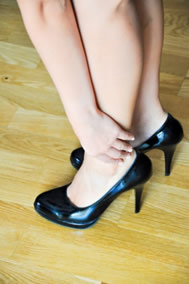 More British women than ever before are ditching their high heels for sneakers. Studies show that nearly 37% of women in the UK who bought shoes, bought sneakers. This is compared to 33% who said that they bought high heels. Victoria Beckham recently admitted that she has stopped wearing her high heels because she does not find them comfortable. Wearing comfortable shoes instead of high heels can greatly impact one’s health. Wearing heels may change the position of your pelvis, and it can shorten your calf muscles and tendons. This can cause the Achilles tendon to become stiffer and wider.
More British women than ever before are ditching their high heels for sneakers. Studies show that nearly 37% of women in the UK who bought shoes, bought sneakers. This is compared to 33% who said that they bought high heels. Victoria Beckham recently admitted that she has stopped wearing her high heels because she does not find them comfortable. Wearing comfortable shoes instead of high heels can greatly impact one’s health. Wearing heels may change the position of your pelvis, and it can shorten your calf muscles and tendons. This can cause the Achilles tendon to become stiffer and wider.
High heels have a history of causing foot and ankle problems. If you have any concerns about your feet or ankles, contact Dr. Nicholas Megdanis from Greater Queens Podiatry PLLC. Our doctor will assist you with all of your podiatric concerns.
Effects of High Heels on the Feet
High heels are popular shoes among women because their style and societal appeal. Despite this, they can still cause many health problems if worn too frequently.
What parts my body will be affected by high heels?
Ankle Joints
Achilles Tendon – may shorten and stiffen with prolonged wear
Balls of the Feet
Knees – heels cause the knees to bend constantly, creating stress on them
Back – they decrease the spine’s ability to absorb shock, which may lead to back pain. Also, the vertebrae of the lower back may compress.
What kinds of foot problems can develop from wearing high heels?
Corns
Calluses
Hammertoe
Bunions
Morton’s Neuroma
Plantar Fasciitis
How can I still wear high heels and maintain foot health?
If you want to wear high heeled shoes, make sure that you are not wearing them every day, as this will help prevent long term physical problems. Try wearing thicker heels as opposed to stilettos to distribute weight more evenly across the feet. Always make sure you are wearing the proper shoes for the right occasion, such as sneakers for exercising. If you walk to work, try carrying your heels with you and changing into them once you arrive at work. Adding inserts to your heels can help cushion your feet and absorb shock. Full foot inserts or metatarsal pads are available.
If you have any questions please feel free to contact our office located in Bayside, New York. We offer the newest diagnostic and treatment technologies for all your foot and ankle needs.
| Bayside Office 4401 Francis Lewis Blvd Suite L3B Bayside, NY 11361 Phone: (718) 229-0222 Fax: (718) 717-0275 | Monday: 9:30am - 7pm |
E-mail us with any questions